The Definitions:
Before jumping into how scale and proportion affect drapery design, let’s start with some basic definitions. Scale is the comparative size of one object to another. Proportion refers to a general relationship in size between two objects.
We know that you as designers use the concepts of scale and proportion all the time in your work. Standard countertop heights are scaled to fit the height of the average person.
And you may recommend that the coffee table be two-thirds as long as the sofa or an area rug extends 18” beyond the dining table on all sides.
Scale: the comparative size of one object to another.
Proportion: a general relationship in size between two objects.
Hems and Headers:
When we are considering scale for drapery panels, we are comparing the size of the hems and headers to the finished length of the drapery panel itself. The most common scenario is 4” hems and headers for a panel that is 90” finished length.
Using the concept of scale (the comparative size of one object to another), 9 ft. panels should have 5” hems and headers, 12 ft. panels should have 6” hems and headers and two-story panels like these need 8” hems and headers.
On the flip side, cafe curtains need smaller hems and headers (usually 3”) to maintain proper scale. These short curtains installed on a bunk bed for privacy are another example of proper scale.
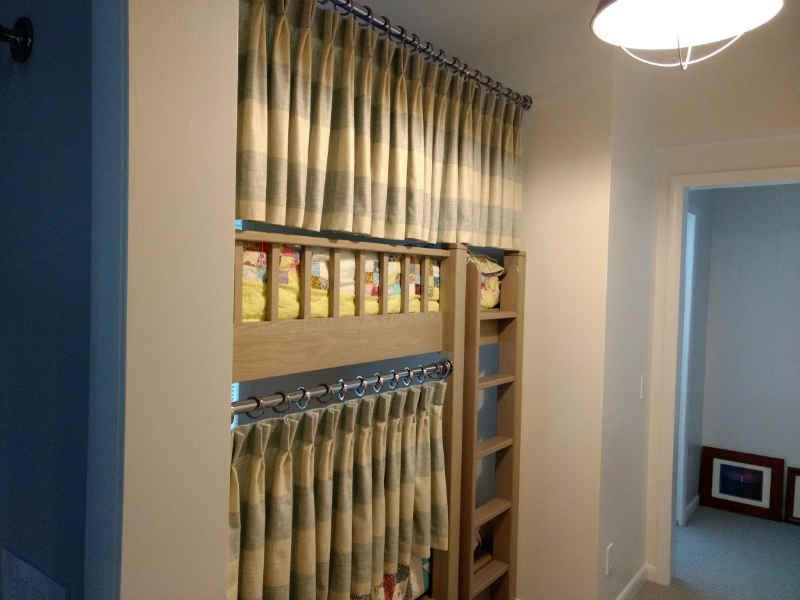
Widths of Material:
When considering proportion for stationary drapery panels, we are determining how wide the drapery panel should be — that is the number of widths of material we need to seam together for each panel.
Just as the size of the coffee table relates to the size of the sofa, we want our drapery panels to relate to the size of the window. We do not want our drapery panels to overpower the window or look like a strand of spaghetti hanging next to the window!
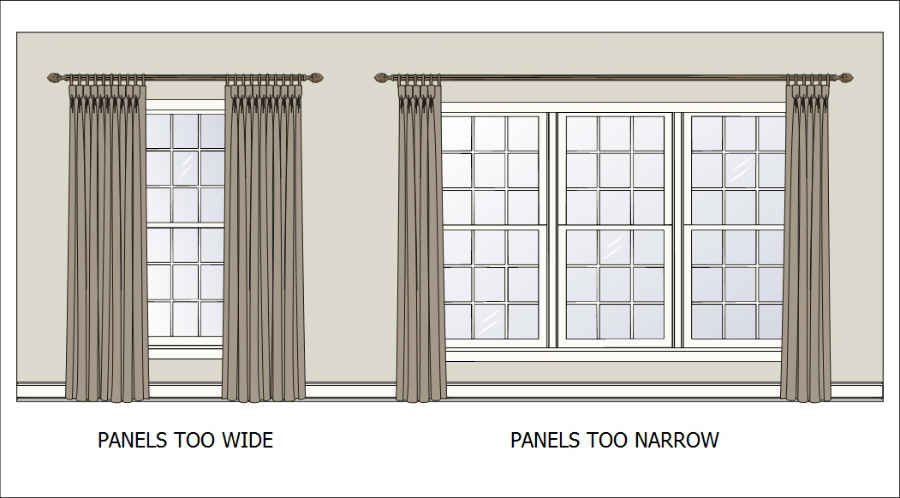
A good rule of thumb is 1 WOM (width of material) for up to a 48” wide window, 1-1/2 WOM for windows 47” to 96” wide and 2 WOM for windows over 8 feet. Of course, if the drapery panels are operable, the required widths of material is calculated so that the panels fully cover the window when closed.
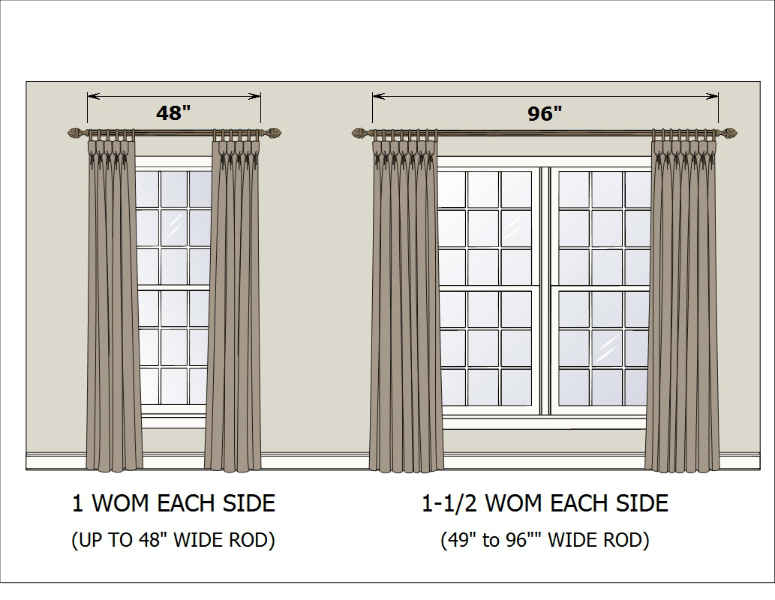
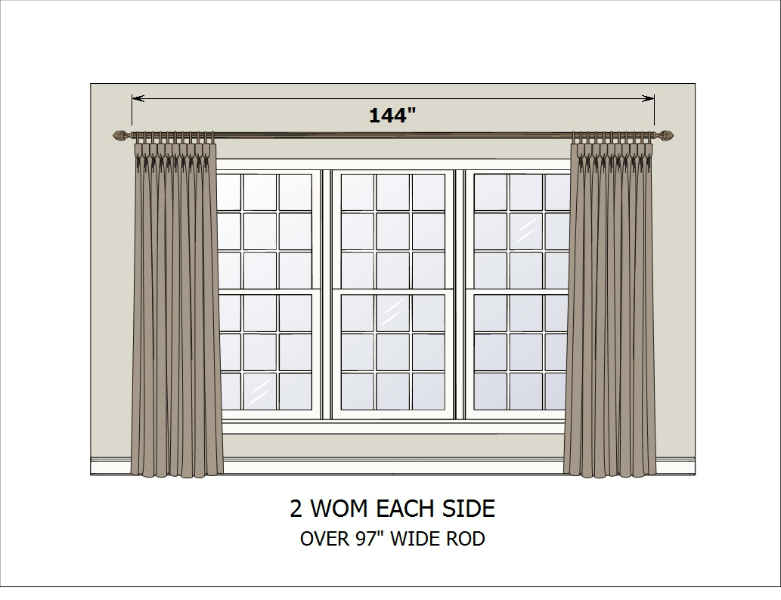
Your Next Project:
Parkway Window Works is an award-winning workroom. Our fabrication expertise and attention to detail are what truly sets us apart.
If you want recommendations for proper proportion on your next drapery project and a workroom that will ensure proper scale in your drapery panels when fabricating, contact us to get started.

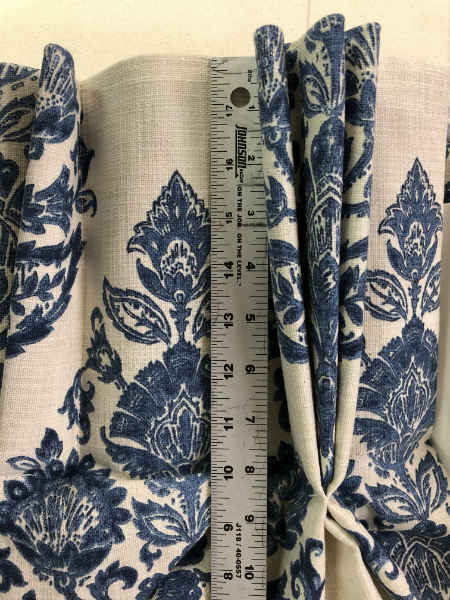
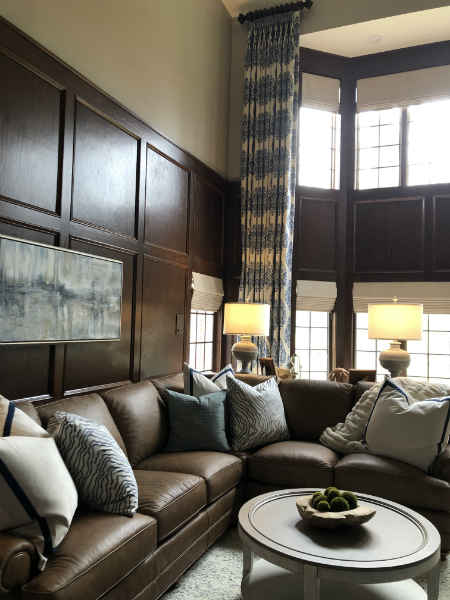
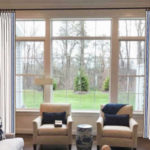
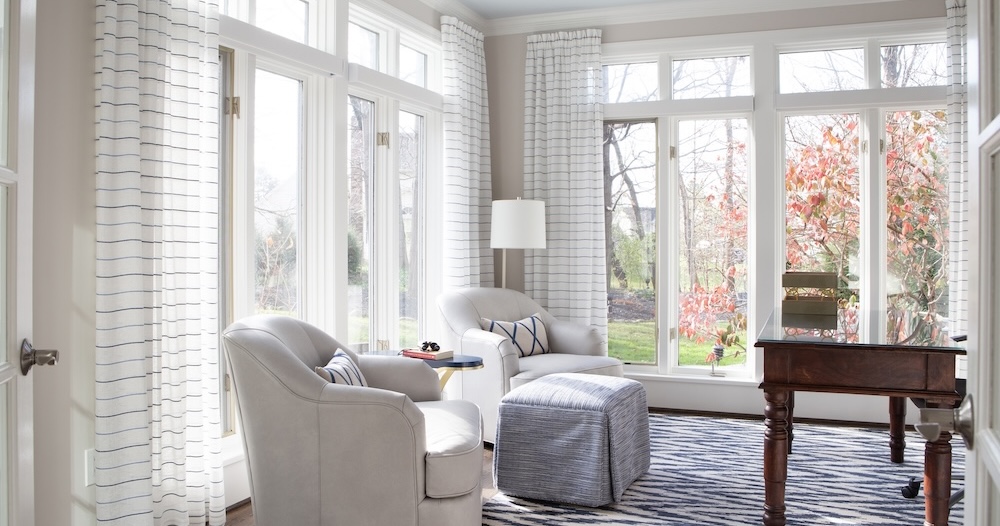

Amy Saunders
| 6 October 2022Hey there! Christmas is just around the corner which means it’s time for me to beautify my living room so it looks festive. I like it when you advised us to make sure the width of our drapery complements the actual size of the window to prevent disproportions. I’ll use this info when I ask someone to make an installation later.
Taylor Abrams
| 23 December 2022I like that you said that when figuring out how big stationary drapery panels should be, or how many widths of fabric we should sew together for each panel, we are taking proportion into consideration. Since I work in my bedroom almost exclusively and detest it when the space is very light, I must keep it dark throughout the day. Now is the time to choose drapes for sale that will perfectly match my window.